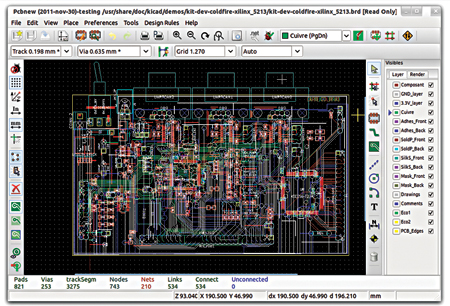Dutta clarifies, “Finishing schools do have a role in the lives of EDA engineers, the reason being many of the graduates from the institutes are not ready for the industry. For those who want to specialise in a particular area like verification of circuits or work in digital implementation, there are some high-end finishing schools in the VLSI sector. They offer a six-month to one-year course, which helps the candidates become industry-ready and make a career in EDA.”
Panicker adds, “Students after finishing their courses go to these training institutes and learn the semiconductor processes. These are the likes of NIIT and Aptech that are teaching the software part of it. So even though the engineers learn computer engineering in the engineering colleges, they still undergo some training from these institutions. Similarly, in our space, there are companies like RV VLSI and Sandeepani. Most engineers undergo a diploma programme of 3-4 months after their degree, to get equipped in the VLSI and semiconductor flow. They are then ready to be hired by VLSI companies like Wipro and Qualcomm.”
Some companies too put the freshers on a learning plan. Cadence offers on-job training for three to six months.
Pathak says, “EDA is a very different segment altogether so we definitely need to acclimatise people and align them with what EDA is all about. That takes a little bit of its own time. With time, they get into the normal cycle. So that’s how we move ahead in terms of our fresher hiring. And then there is lateral hiring, where companies reach out to the market and hire people for specific skillsets and certain job levels which include mid-level and senior-level positions as well.”
The road ahead
While hiring, the EDA industry looks for brains. Pathak explains: “EDA is a very niche segment. So the hiring is very qualitative. We surely do not hire in thousands like any other IT company but we pick the crème of talent. We cannot and do not hire anyone and everyone. The candidate has to be the best in terms of his knowledge to fit into an EDA job.”

KiCad EDA software suite
Broadly, career in EDA tool design can be divided into front-end and back-end roles.
Panicker explains, “Those who want to take up a front-end career should explore a little bit of the architectural standpoint. Let’s suppose he or she wants to design a microprocessor. They should scale up a bit to understand the architecture. Those who are doing the backend need not understand the architecture. For them, the domain shifts a bit from that standpoint. Whether you handle the front-end or back-end, there are immense opportunities in India.”
You have to clear tests, sometimes several stages of tests, to reach this stage. Pathak explains: “Cadence has a three-tier process which involves written exam, analytical exam and interviews. I think the degree of complexity of problems during the examination helps us filter the right kind of people. The criteria are very rigid.”
Moving up the ladder
An EDA engineer begins his career as a software engineer and can choose between two verticals for growth: technical and managerial. In the hardcore technical space, he becomes an individual contributor and reaches up to the level of an architect. An architect is someone who conceptualises and shows directions to an organisation as to how it should think about its products and helps in drawing out a vision.
The managerial role is a combination of technical and managerial skills. Here one gets the opportunity to lead projects and people.
If you want customer interactions as well, you can go for applications engineering.
It is worth mentioning here that every company has different job titles. Cadence is a ten-level organisation. Level 1 is where the engineers start from and Level 10 is where they can head the company too.
As far as pay packages are concerned, it’s a niche industry in this respect too. EDA being all about qualitative work, pay packages ought to be high in this industry. For beginners, the package can range from Rs 600,000 to Rs 900,000. Of course, it varies from company to company, and includes both graduates and postgraduates. Obviously, a differential is maintained between plain B.Tech candidates and B.Tech with M.Tech candidates.
The author is an assistant editor at EFY








